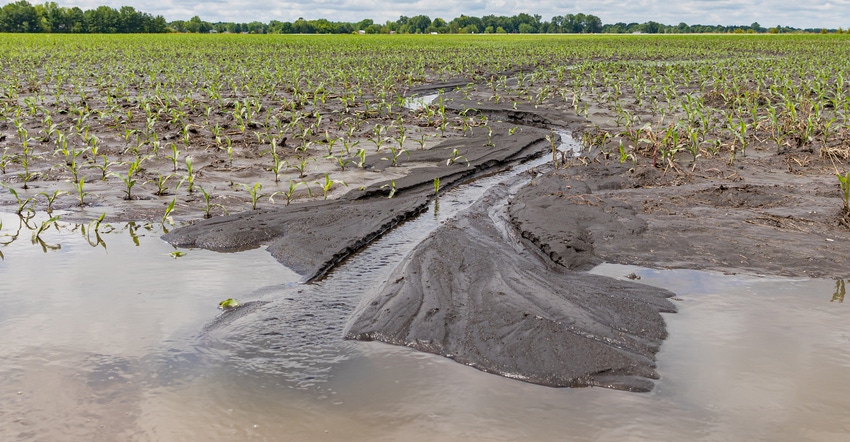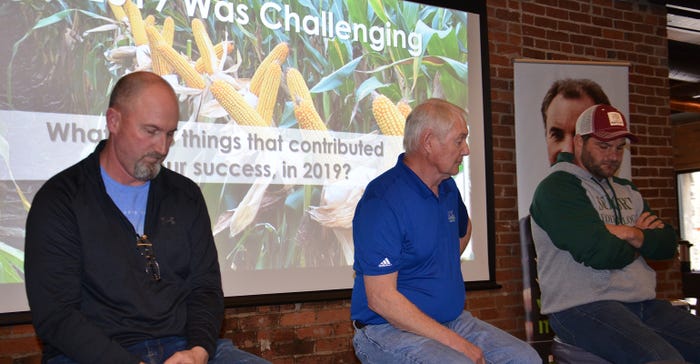
Most people hope 2019, especially the planting season, was a once-in-a-lifetime experience. Planting progress for both corn and soybeans pushed the record for all time slowest ever.
If you have a lucky rabbit’s foot, you might want to rub it regularly. Long-term weather forecasts in mid-March pointed toward increased odds for another wet spring in 2020, although likely warmer than in 2019. If a lucky charm doesn’t pull through for you, how will you adapt to another wet spring in 2020? Can you use lessons learned from 2019 and adjust for conditions?
Three Indiana farmers who strive for high yields each year recently addressed this question at a meeting sponsored by AgriGold. They are Brooks Cardinal, Oaktown; Rodney Finke, Columbus; and Terry Vissing, Marysville.
Brooks Cardinal. Cardinal farms with his brother Brandon and dad, Jerry. “Based on what we saw last year, you can’t give up on the crop,” Cardinal says. “We fought things all season long in 2019, but we stayed with it.
“One thing we learned last year was that it’s important to feed the crop when it needs feeding. We applied a third of our sidedress nitrogen closer to the row with Y-drops mounted on the applicator, and feel it really helped.
“Some of our land is irrigated. We have used fertigation in the past at times, adding nutrients through irrigation water. The problem is that sometimes there is already plenty of moisture when you want to add more fertility. This year we will have the option of applying nutrients later in the season with Y-drops on a high-clearance sprayer if we need to. That should help.”

ANOTHER WET SEASON? Long-term weather forecasts in mid-March pointed toward increased odds for another wet spring in 2020.

Rodney Finke. “My first cornfields which I planted early and perhaps a bit on the heavy side didn’t yield as well for me in 2019,” Finke recalls. “If that happened again, I would hold off on planting corn. You can get by planting soybeans when soils are a bit heavier, so I might start there.
“The other thing I would do is make sure I have enough nitrogen and sulfur on corn early in the season. If leaching is a concern, or if you feel you need more nitrogen when corn is still relatively small, you may be able to broadcast urea over the top.”
Terry Vissing. Vissing echoes Finke. “If you think soils are too wet to plant corn, consider shifting to soybeans and planting as soon as you think you can. Soybeans seem to be more forgiving than corn when planted into heavy soils.
“We also feel spacing is important for soybeans. We’re finding better results when we space them evenly and get them at uniform depth. We like to see them at least an inch deep, planted uniformly. Sulfur and boron are important for soybeans, too.”
About the Author(s)
You May Also Like




